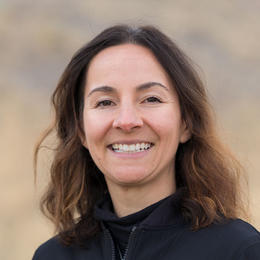By Carol O’Meara, Colorado State University Extension, Boulder County
When planting a butterfly garden, one of the challenges is learning – and accepting – that the plants you put in are going to be eaten. A good butterfly garden is designed to provide food for the caterpillars along with flowers with nectar for adults to sip. Most gardeners understand that this is part of butterfly gardening, but sometimes butterflies can be capricious, and leave their larvae on gardens planted for food or cut flowers.
When this happens, instead of assuming the munching bug is a pest, check books or Extension offices for identification of the caterpillar before squishing or spraying to get rid of it. Chances are, that insect is a good guy in disguise.
The best gardens are teeming with life, and we can do a lot to help protect and encourage a wide variety of living creatures. Start by planting a garden and fill it with plants that nourish and support a healthy, living system. Loss of habitat ranks high on the list of serious threats to pollinators and monoculture lawns do little to offset the loss once subdivisions go in.
Animal and insects aide pollination of a staggering three-quarters of the world’s flowering plants. Food and textile crops, trees, flowers – many rely on the quiet but diligent activities of bees, moths, flies, bats, birds, ants, butterflies, wasps, and beetles. But changes to agricultural practices and conversion of farms or open lands to subdivisions are taking a toll on the nesting sites and food sources for these creatures. A diverse garden is one way to provide both food and housing for bugs, birds, and mammals.
You can help restore some of the lost resources by preserving nesting or foraging sites in your yard. To do this, include sources of water, areas for nesting or egg-laying and nooks or crannies for over-wintering. Water features, small bubbling fountains, or bird baths often serve as a watering hole for many insects; you and your family can watch the visitors enjoy the drink you provide. Use mulch to help provide hiding places and capture moisture for wandering bugs or spiders.
Many bees require an undisturbed location for nesting sites. Some use openings in rock walls or hollowed out canes from roses or raspberries. Others burrow tunnels into soil. Spend time outside watching what visits your yard, creating a list of the types of insects you see. Check out the Bee’s Needs program with the University of Colorado for help in identifying your bees. Once you get an idea of who is visiting, you can plan for providing the right conditions they need for nesting sites.
When planning the garden, put in plants that bloom in succession, so flowers with nectar and pollen are available all season long. Plants with shallow blossoms, such as mints, alyssum, or fernbush (Chamaebatiaria millefolium), attract pollinators and beneficial insects, while cone flowers (Echinacea) are good for nesting. Native plants are important for all of our bees, so if you can, incorporate those as well. Be thoughtful when gardening about keeping plants for pollinators healthy, and if problems arise, never use pesticides while plants are in bloom or on plants near to those in flower.

By Jamie Weiss
Stay in the Know
Sign up for emails to stay up to date on how you can help and enjoy birds in Colorado, Wyoming, and Utah.




